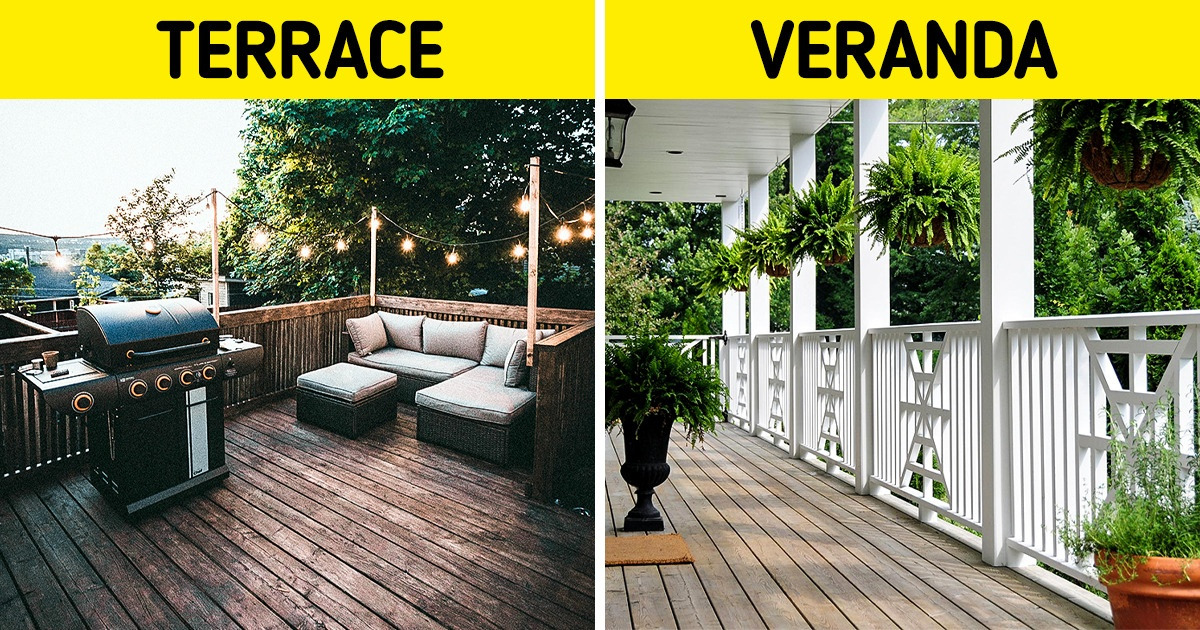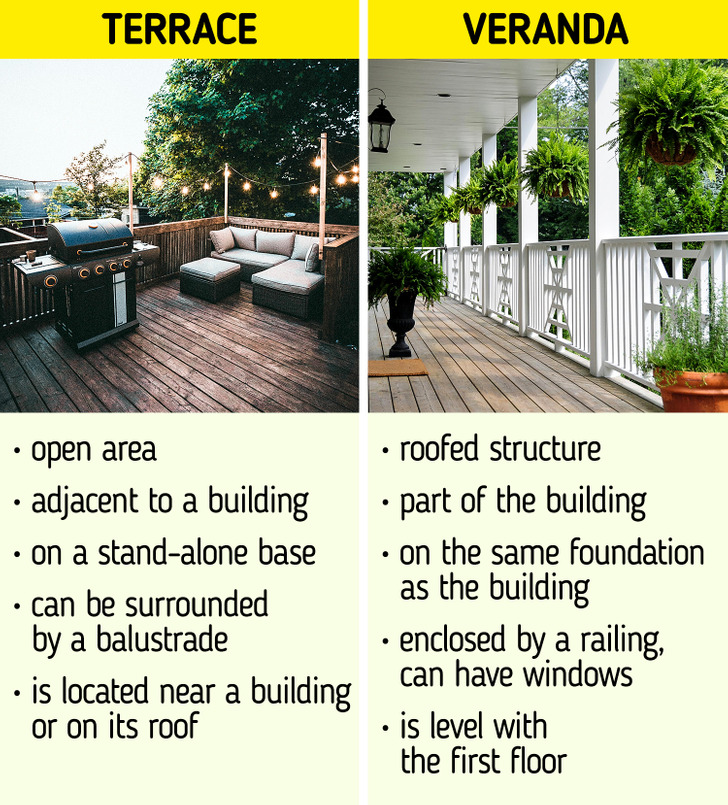The Difference Between a Terrace and a Veranda

Read this 5-Minute Crafts article to find out the answer.
A veranda is a roofed structure, like a gallery or porch, attached to the outside of a building. Despite the fact that a veranda is located outside of a house, it’s still part of it, being erected on the same foundation with it and put under one roof. Therefore, a veranda is often planned at the same time as the erection of a house.
Unlike a balcony, for example, a veranda is level with the first floor and often extends across both the front and the sides of the structure. Usually, it is partially enclosed by a railing. A veranda can have panoramic windows on one or more sides, and an insulated version can serve as a separate room in the house.
A terrace is an external open area adjacent to the building. Usually, it’s placed on a stand-alone raised base. It can be supported by an embankment, on a natural or man-made foundation, look like a platform supported by columns, or be surrounded by balustrade. A distinctive feature of the terrace is that most of it (or the entire area) is open to the sky.
The terrace can either be located near a building or on its flat roof.
